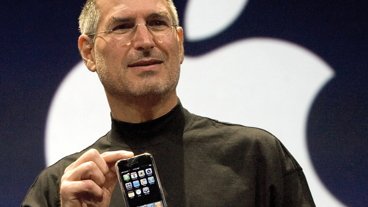Update: This article has been updated to clarify that Netflix does not release specific numbers of shows, and instead publicizes the size of its library based on hours of content.
One of the largest internet streaming providers, Amazon Prime, reportedly uses a method of counting individual TV episodes toward the total number of "shows" offered, which could be a problem if consumers feel mislead by the claims, reports Fast Company.
Amazon's $79-a-year Prime Instant Video boasts that it has "17,000 movies and television shows" when the service actually has only 1,745 movies and about 150 TV series. The language can be taken two ways, and Amazon's claim is technically correct.
What is misleading, however, is the term "shows," which can be used interchangeably when talking about an episode or a series as a whole.
The internet sales giant counts 192 episodes of the TV series 24, over 200 epsiodes of The X-Files and 170 episodes of Grey's Anatomy toward the total 17,000 total. The average number of episodes from a TV series is counted toward the library is 100.
Source: Amazon
Another major player in online streaming, Netflix, does not publicize the specific number of titles in its library as the metric may fluctuate based on availability.
"We do not disclose the number of viewables on Netflix," a spokesperson said. "A primary reason is that the title count fluctuates a lot as titles come in and out of window. Additionally, while we do have the biggest streaming library, we don’t want people to measure us by title count. The number of titles does not equate to member happiness or viewing pleasure."
The Associated Press reported earlier this week that Netflix had over 60,000 streaming titles, but that number is disputed as Netflix has only made claims to thousands of hours of content.
"According to our count, it's about 13,000," said Daniel Choi of InstantWatcher.com, a website that uses the Netflix API to track streaming content. "But there are two different ways of counting. We count all television series as one title each. If you split up the TV series into individual episodes, that count will go up."
Understandably, consumers may see the quoted totals as a misrepresentation of the amount of content offered by the companies, but it seems as though both services are content to leave the numbers ambiguous.
"I think my count probably represents better what people think of in terms of the number of titles," Choi said. "Usually you become a fan of a TV series— you don't cherry-pick individual episodes."
 AppleInsider Staff
AppleInsider Staff







-m.jpg)






 Chip Loder
Chip Loder
 Marko Zivkovic
Marko Zivkovic
 Malcolm Owen
Malcolm Owen
 Christine McKee
Christine McKee

 Sponsored Content
Sponsored Content











50 Comments
So, shouldn't the headline read something like "Amazon inflates streaming library numbers, unofficial Netflix stats use same method"? Netflix actually isn't saying anything about their numbers. They're not misleading anyone, in fact, as said, they don't say as to *not* mislead anyone.
And they'll get away with it because no one cares about them.
Apple, on the other hand, can't sneeze without people saying the color of the snot is a reason to sue or sell.
It was with great fanfare that Netflix helped usher in the world of streaming video. But ever since they helped 'usher streaming video in' all they seem to do is discourage you from using it. Movies from the 1980s and 1990s are noted as 'Recently Added' to their streaming library. In the end, their streaming library is woefully thin. It seems they want to push people to the more expensive DVD plans, which seems to go against the grain as far as technology goes. It seems as though Netflix could make a handsome profit if they moved more of their library to the streaming model. Fewer distribution centers, fewer people, lower mailing costs.
Whatever bad PR Netflix gets, they deserve.
So, shouldn't the headline read something like "Amazon inflates streaming library numbers, unofficial Netflix stats use same method"? Netflix actually isn't saying anything about their numbers. They're not misleading anyone, in fact, as said, they don't say as to *not* mislead anyone.
Very true... but given the 'source' here such ridiculous hyperbole comes as no surprise.
Readers feel misled.